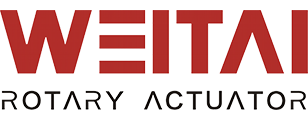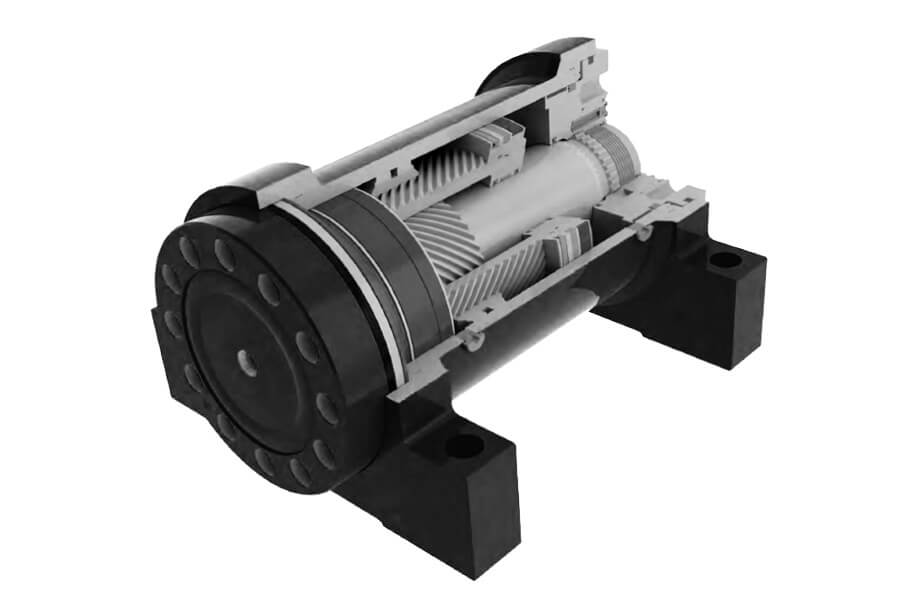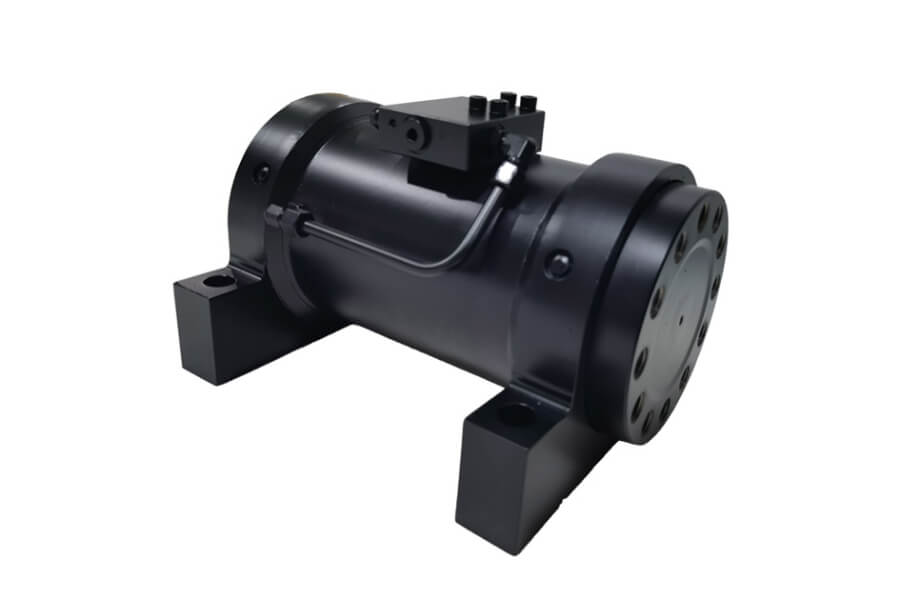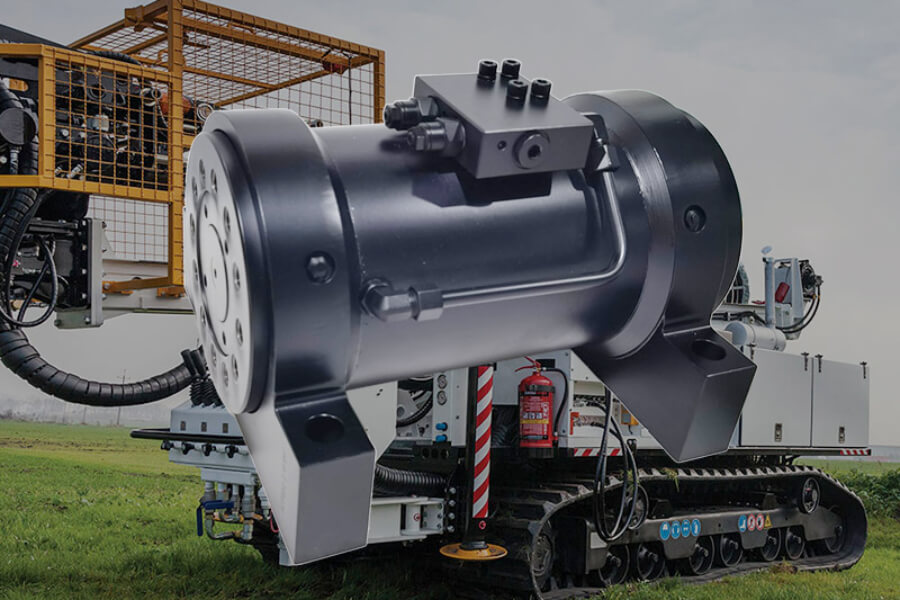A hydraulic rotary actuator plays a crucial role in a wide range of industrial applications, offering precise control and powerful torque output in machinery and automation systems. In this introductory guide, we’ll delve into the key components, the working principles, the maintenance tips, and typical applications across industries of a hydraulic rotary actuator.
Introduction to a Hydraulic Rotary Actuator
It is a device that converts hydraulic power into mechanical motion in a rotary (or rotational) manner. Unlike linear actuators, which produce straight-line motion, rotary actuators generate rotational force around an axis.
Working Principles
These actuators typically consist of a hydraulic cylinder, piston, and rotary shaft assembly. When hydraulic fluid (often oil) is pressurized and directed into the cylinder, it pushes the piston, thereby rotating the output shaft. This rotation can be controlled precisely, allowing for various degrees of angular movement depending on the application’s requirements.
Key Components
Cylinder: Houses the piston and hydraulic fluid.
Piston: Transfers hydraulic pressure into mechanical force.
Shaft Assembly: Transmits rotational motion to the connected machinery or load.
Seals and Bearings: Ensure smooth operation and prevent leakage.
Advantages
High Torque: Capable of generating significant rotational force.
Precise Control: Enables accurate positioning and movement.
Durability: Resistant to harsh environments and capable of handling heavy loads.
Versatility: Adaptable to various operational conditions and configurations.
Design Considerations for Hydraulic Rotary Actuators
Designing a hydraulic rotary actuator requires careful consideration of several key factors to ensure optimal performance, efficiency, and longevity. Next, we will explore essential design considerations that engineers must keep in mind when developing hydraulic rotary actuators.
1. Torque Requirements
Calculating Torque: Determine the maximum torque output needed based on the application requirements, including load characteristics, acceleration/deceleration rates, and safety factors.
Matching Components: Ensure the hydraulic system, cylinder size, piston diameter, and gear ratios are selected to deliver sufficient torque without compromising efficiency.
2. Speed and Control
Angular Velocity: Define the required angular speed range for precise control and responsiveness.
Valve Selection: Choose appropriate directional control valves, proportional valves, or servo valves to regulate fluid flow and achieve desired speed profiles.
Feedback Systems: Implement position feedback devices (such as encoders or sensors) to monitor and control rotational position accurately.
3. Fluid Compatibility and Contamination Control
Fluid Selection: Select hydraulic fluids compatible with actuator materials and operational temperatures to ensure optimal performance and longevity.
Filtration: Install effective filtration systems to minimize contaminants in the hydraulic fluid, which can degrade seals and affect actuator performance over time.
4. Environmental Considerations
Temperature and Pressure: Account for operational temperatures and pressures to ensure the actuator operates within safe limits.
Corrosion Resistance: Choose materials and coatings resistant to corrosion and wear, especially in harsh environments like marine or outdoor applications.
5. Mounting and Integration
Mounting Configurations: Design actuators with appropriate mounting interfaces and brackets to integrate seamlessly with existing machinery or systems.
Alignment: Ensure proper alignment of the actuator shaft with driven components to minimize wear and mechanical stress.
6. Safety and Reliability
Overload Protection: Incorporate overload protection mechanisms to safeguard against excessive torque or pressure.
Sealing: Use high-quality seals and gaskets to prevent hydraulic leaks and maintain operational integrity.
Maintenance Access: Design for ease of maintenance with accessible components for inspection, lubrication, and replacement.
7. Testing and Validation
Prototype Testing: Conduct thorough testing of prototypes to validate torque, speed, and reliability under various operating conditions.
Simulation: Utilize computer-aided design (CAD) and simulation tools to optimize performance parameters and anticipate potential issues before fabrication.
Maintenance Tips for a Hydraulic Rotary Actuator
Proper maintenance is key to ensuring the longevity, reliability, and optimal performance of a hydraulic rotary actuator. Below, we will introduce to you some essential maintenance tips that can help engineers and maintenance personnel keep hydraulic rotary actuators in top condition.
1. Regular Inspection Schedule
Visual Inspection: Conduct regular visual inspections to check for leaks, corrosion, or any signs of wear on seals, gaskets, and external components.
Functional Testing: Test the actuator under load to ensure it operates smoothly and meets performance specifications.
2. Lubrication Maintenance
Lubrication Schedule: Follow manufacturer recommendations for lubrication intervals and use compatible lubricants to maintain smooth operation of moving parts.
Grease Points: Apply grease to designated points, such as bearings and shafts, to reduce friction and wear.
3. Seal and Gasket Care
Seal Inspection: Regularly inspect seals and gaskets for signs of damage, wear, or leaks. Replace them promptly to prevent hydraulic fluid leaks and maintain system integrity.
Seal Compatibility: Ensure seals are compatible with the hydraulic fluid used to prevent degradation and premature failure.
4. Fluid Quality and Filtration
Fluid Checks: Monitor hydraulic fluid levels and quality regularly. Replace fluids as needed to maintain proper viscosity and cleanliness.
Filtration System: Maintain and replace filtration elements according to manufacturer recommendations to prevent contamination and ensure optimal performance.
5. Environmental Considerations
Temperature and Moisture Control: Protect actuators from extreme temperatures and humidity to prevent corrosion and degradation of internal components.
Environmental Sealing: Ensure actuators are properly sealed against dust, dirt, and moisture ingress, especially in outdoor or harsh environments.
6. Safety and Operational Checks
Pressure Checks: Regularly monitor hydraulic system pressure to ensure it operates within safe limits and does not exceed the actuator’s rated capacity.
Safety Devices: Verify that overload protection devices are functioning correctly to prevent damage during unexpected load conditions.
7. Training and Documentation
Operator Training: Train personnel on proper operating procedures, maintenance tasks, and safety protocols related to hydraulic rotary actuators.
Documentation: Maintain detailed records of maintenance activities, inspections, and repairs for future reference and analysis.
Conclusion
In summary, hydraulic rotary actuators are essential components in modern engineering and industrial automation, providing reliable and powerful rotary motion solutions across diverse applications. Understanding their functionality and applications can help engineers and businesses optimize machinery performance and operational efficiency.



